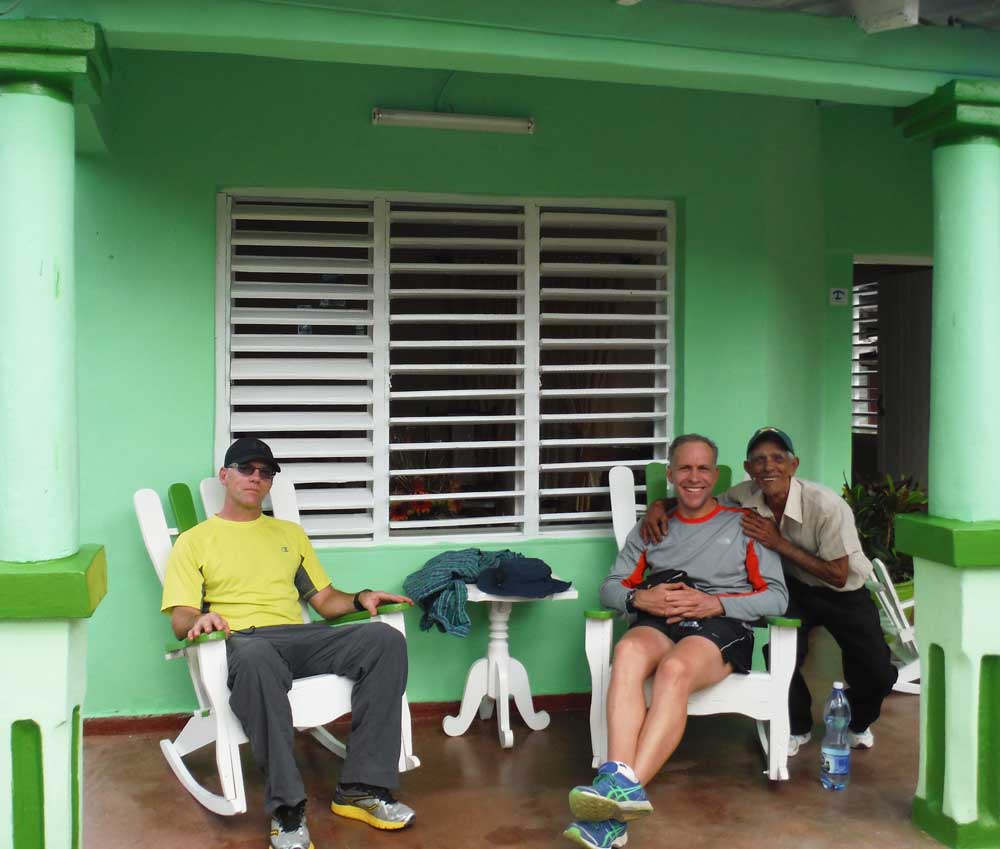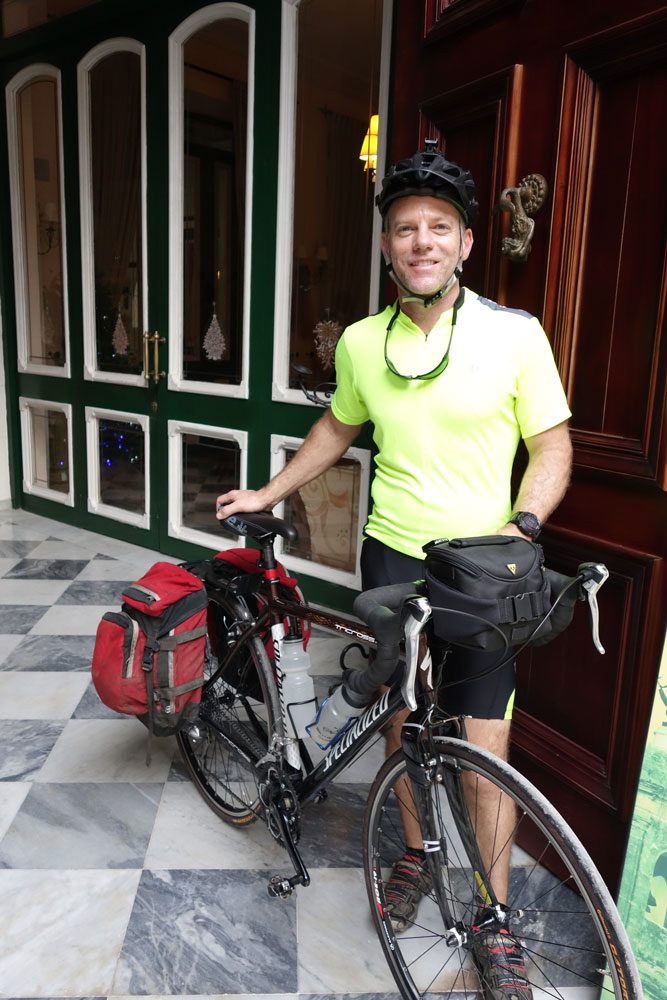Food and Lodging
QUICK INDEX OF TOPICS ON THIS PAGE:
- CASAS PARTICULARES
- EATING OUT
- HOTELS
Casas Particulares
Most nights we stayed in private homes, called “casas particulares”. This is a great way to go cycle touring in Cuba. This is THE way to go. Camping options are very limited, prohibited almost everywhere, and the hotels are more expensive and not everywhere. Stay in casas particulares, meet the people, spend less money. And don’t haul your camping gear on your bike, you don’t need to in Cuba!
The other great thing about the “casas” is that there will be food there. In all but the biggest towns, there is no guarantee that you’ll easily find an open restaurant, grocery store or market to purchase food. Getting enough to eat in Cuba can be a challenge so having dinner and breakfast available in the casa particular is a very nice option. An early breakfast in the casa helped us to get on the road early in the mornings to get some miles in before the day got warm. Most “casas” were $25-$30/night for all three of us, often on two beds (hopefully a double and a twin), plus 5-7$/person for dinner and $5/person for breakfast. Handing the proprietor $40 or $60 in the morning after a night’s stay and a couple of meals for the three of us always felt like money well spent. Sometimes there was a mini-fridge in the room with cold beers and waters when we got there after a hot day of cycling. Worth every penny (peso). They take care of you. In every casa particular we stayed at, the people who hosted us bent over backward to accommodate us and show us the utmost hospitality.
Eating out
We would often eat dinners “out” in town and our experience in Cuban restaurants and eateries was quite an eye-opener. It is easy to imagine Cuban food as bursting with tropical flavors from a richly diverse set of cultural backgrounds. Reality, however is another story. The food in Cuba was ok, but tropical culinary paradise, it is not. The food we had in Cuba was, for the most part, bland and unexciting. I feel bad just saying it, but honestly, that was our general experience. Lots of rice, occasionally beans, lots of “insalata mixta” (“mixed salad”, really just a light iceberg lettuce or cabbage with a little grated carrot or cucumber for color, very little dressing), lots of chicken, lots of pork, lots of ham and cheese sandwiches (not good ones), eggs most mornings, fruit most mornings.
What was missing? Fresh orange juice, fresh salsa, tortillas, fresh green vegetables, ANYTHING spicy (isn’t this the land of Habanero peppers?!?), good coffee, onions, salt, pepper. Honestly the food in Cuba is just another example of how everything is sort of “broken”. Restaurants, just like the rest of Cuba, can only get what they can get, when they can get it. And even then maybe they can’t. Consistent, regular delivery of quality ingredients by a reliable restaurant supply company or distributor is just not a reality there. We enjoyed a couple of nice meals along the way but overall the food was mediocre at best. Suffice to say, you probably shouldn’t be going to Cuba for the food and restaurants.
(For more on this, see FAQs page.)
Hotels
There were a couple of times that we splurged for a hotel room on the trip. We had arranged a reservation in advance for the Hotel Florida in Habana Vieja (old Havana) the night of our arrival in Cuba, which was a smart move. First night in a new country, late night arrival, nice to have a reservation at a legitimate hotel. Plenty of time to wing it later. The Hotel Florida was a neat old hotel and a great place to land but cost $200/night and was certainly not the norm for our budget.
We stayed a night at Club Amigo, Hotel Farallon, an all-inclusive resort in Marea de Portillo along the south coast. This place was like a shining jewel in the night when we arrived. Not because it was so fancy (which it wasn’t) but because it was open and had lights and electricity, and a buffet that was still open and we’d just finished riding 30 miles in the dark after having hiked 8.5 hours to the top of the highest point in Cuba and back that day. $88 for the three of us. Three beds, all we could eat, all we could drink. A Cuban 5-star resort, (aka a 2-star resort). This place was loaded with sun-starved Canadians lured down there by the $200/week all-inclusive winter deals.
We also stayed one night at a Club Amigo all-inclusive hotel in Playa Ancon later in the trip. Although comparable in amenities to the Marea de Portillo Club Amigo resort, due to it’s proximity to tourist-heavy Trinidad, the Playa Ancon location was almost twice the cost at $170/night for the three of us. This was a high-end (by Cuban standards) hotel and yet again there were issues there that would be considered completely unacceptable in most countries. We had sewage coming up through the floor drain of our room in the middle of the night, and the main phone in the lobby that I used to make a $3/minute international call home the US, had a broken wire that I had to hold together the entire time I was on the phone. Oh Cuba. Our request to the management for a partial refund due to the sewage in the room was met with, “Well, we’d like to give you a refund but we’d have to call and get approval from the head office in Havana and the phone’s not working now so… how about a three bottles of our finest rum instead?” I certainly would’ve preferred the cash refund but the rum, albeit ridiculously heavy to carry on a light touring bike, was quite tasty and very much appreciated later.






